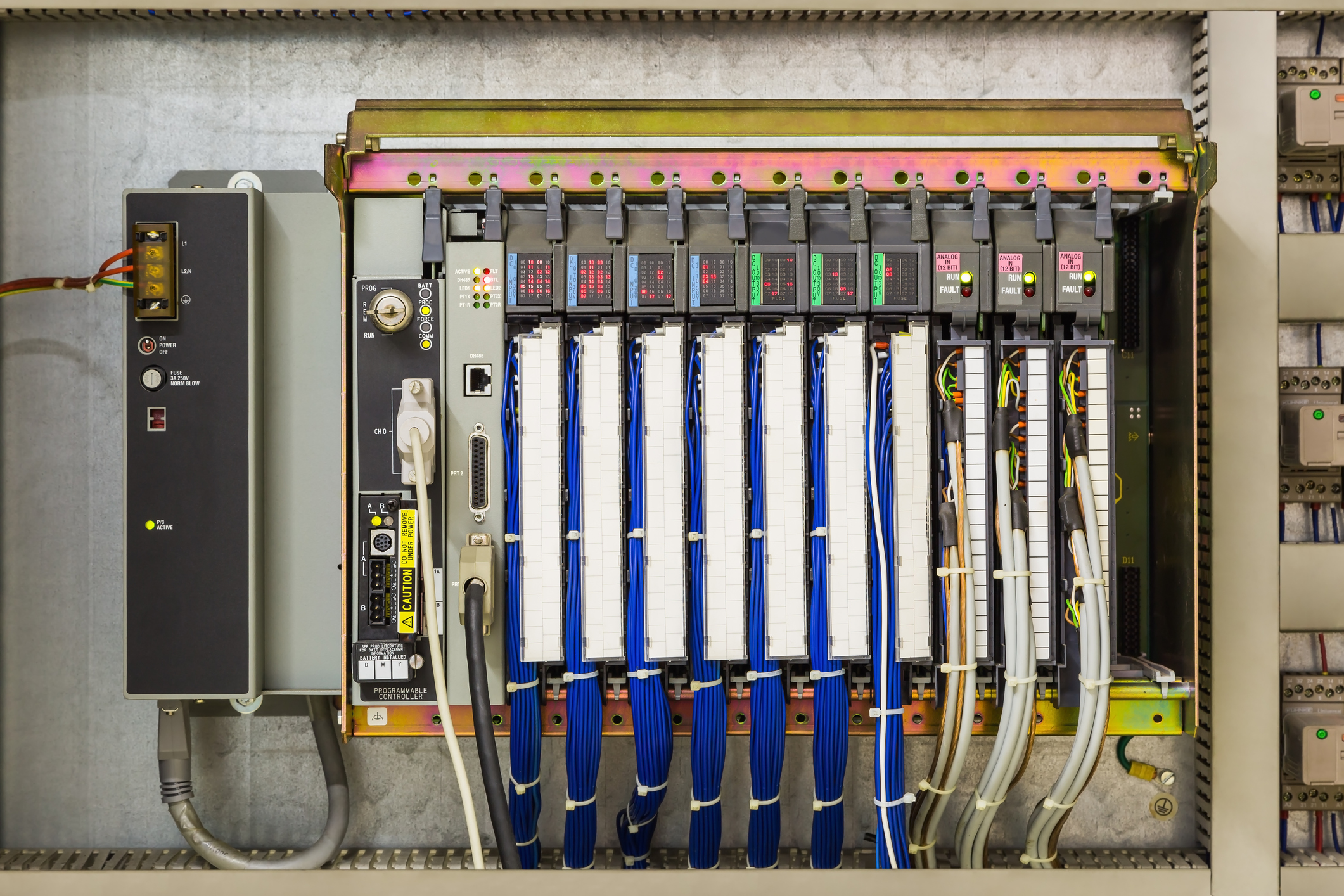PLC Rockwell Automation
How Many Controllers Are Present in Safety PLC?
In industrial automation, safety is crucial as systems become more complex. The safety programmable logic controller (PLC) has become a critical component in ensuring secure and efficient operations. These specialized controllers have become the backbone of many modern safety systems, ensuring that machinery and processes operate securely and efficiently.
One common question is how many controllers are present in safety PLCs? To provide clarity, we have created a comprehensive blog post that explores the components and architectures of safety PLCs, types of controllers, and factors that determine the number of controllers needed.
Whether you’re an engineer, safety professional, or enthusiast, this blog post will enhance your understanding of safety PLCs. Join us as we journey through the fascinating world of safety PLCs and uncover the secrets behind their design and operation.

FAQ
What are Safety PLCs?
Safety PLCs (Programmable Logic Controllers) are designed to provide reliable and safe control of machinery and processes in industrial environments. They are typically used in applications requiring high degrees of safety, such as in the automotive, pharmaceutical, and food processing industries.
A safety PLC consists of several components, including:
- Safety I/O modules: These input/output modules are designed to monitor and control safety-critical processes. They are designed to detect input signal errors and provide a safe output signal if a fault is detected.
- Safety logic modules: These modules provide the software and logic necessary for monitoring and controlling safety-critical processes. They typically use specialized programming languages such as Function Block Diagram (FBD) or Safety Function Blocks (SFB) to create safety programs.
- Safety communication protocols: These protocols are used to communicate between different safety system components. Examples of safety communication protocols include Safety Over Ethernet (SOE), Safe Link, and SafetyBUS p.
- Safety sensors: These sensors are used to detect dangerous conditions such as over-temperature, over-pressure, or over-speed. They are used to provide input signals to the safety I/O modules.
Safety PLCs can be architected in various ways, depending on the specific application requirements. Two common architectures are:
- Standalone safety PLC: In this architecture, the safety PLC is entirely independent of the main control system. It has its own I/O modules, logic modules, and communication protocols. This architecture is useful in applications where the safety system needs to be completely independent of the main control system.
- Integrated safety PLC: This architecture integrates the safety PLC into the main control system. The main control system shares the same I/O modules, logic modules, and communication protocols. This architecture is useful in applications where the safety system needs to interact with the main control system.
What is a safety controller in PLC?
A safety controller is a programmable logic controller that monitors and controls safety-critical processes in industrial applications. They can perform emergency shutdowns in the event of an unsafe condition. These controllers often incorporate specialized safety features, such as redundant control circuits and fault monitoring, to ensure reliable operation in hazardous environments.
In addition to providing enhanced safety features, safety controllers can improve productivity and reduce downtime. By automating safety-critical processes, these controllers can help to minimize human error and optimize machine performance.
Which controllers are used in PLC?
Various types of controllers are used in a programmable logic controller system, including:
- Central processing unit (CPU): This is the main processing unit of the PLC that carries out the control logic and communication functions.
- Input/output (I/O) modules: These modules connect to field devices, such as sensors and actuators, and interface with the CPU to receive and transmit data.
- Communication modules: These modules enable communication between multiple PLCs and other devices, such as computers or HMIs (Human Machine Interfaces).
- Analog input/output (AI/AO) modules: These modules are used to interface with analog signals, such as temperature or pressure sensors.
- High-speed counter modules: These modules are used to precisely measure high-speed events, such as counting the number of revolutions per minute of a motor.
- Motion control modules: These modules are used to control motion systems, such as servomotors or stepper motors.
- Safety modules: These modules are designed to ensure the safe operation of the PLC system, such as emergency stops and safety interlocks.
The type of controllers used in a programmable logic controller system depends on the specific application requirements and the features required to control and monitor the industrial process.
What are the integrated safety functions for safety PLC
controllers?
Integrated safety functions are a set of safety features that are integrated into safety PLC controllers. These features allow for the implementation of safety applications without requiring separate safety modules or complex wiring.
Some examples of these safety functions in safety PLC controllers include:
- Safety interlocks
- Emergency stop
- Safe limited speed
- Safe direction
- Safe torque
- Safe stop
- Safe brake control
- Safe speed monitoring
- Safe standstill
These safety functions help to reduce the risk of accidents and injuries in industrial environments and ensure that machines operate safely and efficiently.
What is a safety circuit?
The safety circuit is a crucial component designed to protect personnel, equipment, and the environment from hazards such as machinery malfunctions, equipment failures, or hazardous material leaks.
The safety circuit typically includes various safety sensors, switches, and other safety devices that are wired to the safety programmable logic controller. It monitors critical safety parameters, such as temperature, pressure, motion, and position. It sends signals to the safety PLC controller to initiate safety functions, such as stopping a machine or shutting down a process.
The safety PLC controller then processes these signals, determines the appropriate safety response, and activates safety functions to prevent or minimize the impact of a safety event. This can include shutting down a machine, activating safety interlocks, or triggering alarms to alert personnel of a safety hazard.
What are three PLC controller types?
The three types of programmable logic controllers are:
- Compact PLC: A compact PLC is a small and cost-effective controller ideal for small to medium-sized applications. They typically have limited I/O capabilities, but they can still handle basic control tasks.
- Modular PLC: A modular PLC is a controller that can be easily expanded to accommodate larger applications. They consist of a power supply, CPU, and I/O modules, which can be added or removed as needed.
- Rack-Mounted PLC: A rack-mounted PLC is designed to be mounted in an equipment rack alongside other control equipment. They are typically used in large, complex applications and can have a high I/O count.
What are safety relays?
Safety relay modules provide an additional layer of safety for machinery and equipment by monitoring and controlling the power flow. They work in conjunction with PLCs to ensure that a machine or process stops or shuts down if there is an unsafe condition.
Safety relays are designed to detect specific hazardous conditions, such as an open door or a guard being removed. They can be programmed to send a signal to the PLC to initiate a shutdown or to take other appropriate actions to make the system safe. The modules are often equipped with multiple input and output channels to allow for more complex monitoring and control of various conditions.
Safety relays typically have built-in self-monitoring safety relay features to ensure that they function correctly and can detect any faults in the system. They are also designed to withstand harsh environments and have redundant components to provide high reliability and safety.
What are the safety PLC international safety standards?
One of the most widely recognized is the International Electrotechnical Commission’s (IEC) 61508 standard, which provides guidelines for the functional safety of electrical, electronic, and programmable electronic safety-related systems. Another related standard is the IEC 61511 standard, which focuses specifically on the safety of instrumentation and control systems used in the process industry.
Additionally, the American National Standards Institute (ANSI) and the National Electrical Manufacturers Association (NEMA) also provide safety standards for PLCs used in the United States.
